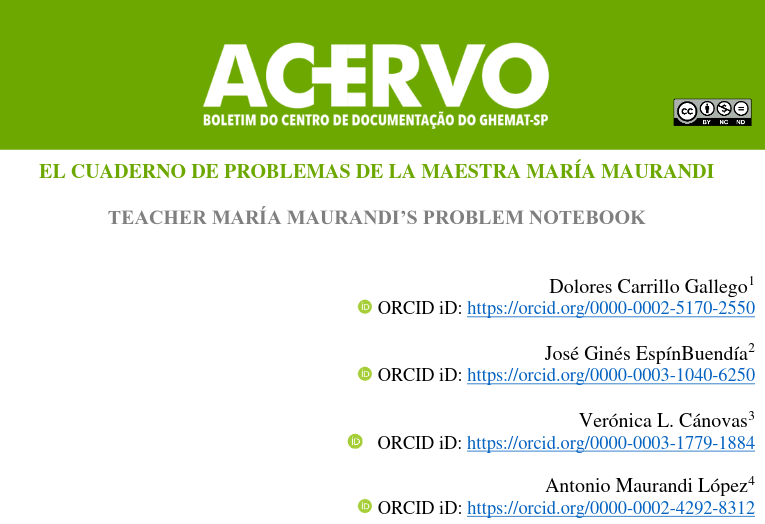El cuaderno de problemas de la maestra María Maurandi
Published in Acerbo, 2024
Recommended citation: Carrillo Gallego, D., Espín Buendía, J., Cánovas López, V., and Maurandi-López, A. (2024). El cuaderno de problemas de la maestra María Maurandi. ACERVO - Boletim do Centro de Documentação do GHEMAT-SP, 6:1–21, DOI: https://doi.org/10.55928/ACERVO.2675-2646.2024.6.138, http://ojs.ghemat-brasil.com.br/index.php/ACERVO/article/view/138 https://doi.org/10.55928/ACERVO.2675-2646.2024.6.138
Resumén: Una de las fuentes utilizadas en la investigación en Historia de la Educación Matemática son los cuadernos escolares. Este trabajo está dedicado a analizar un cuaderno de problemas que forma parte del fondo de cuadernos del Centro de Estudios sobre la Memoria Educativa (CEME) de la Universidad de Murcia. Se ha investigado la autoría del cuaderno, que elaboró la maestra María Maurandi (1881-1956), su formación y el tipo de escuela en la que ejerció la docencia. Se han identificado y categorizado los contenidos matemáticos relacionados con los problemas y ejercicios propuestos, se ha identificado el uso por esta maestra de los libros de aritmética escritos por José Dalmau Carles (1857-1928) y se han comparado las técnicas propuestas por estos libros y los expuestos en el cuaderno de María Maurandi.
Abstract: One of the sources used in research on the History of Mathematics Education are school notebooks. This paper is devoted to the analysis of a problem notebook that forms part of the collection of notebooks of the Centro de Estudios sobre la Memoria Educativa (CEME) of the University of Murcia. Research has been carried out into the authorship of the notebook, which was written by teacher Maria Maurandi (1881-1956), her training and the type of school in which she taught. The mathematical contents related to the problems and exercises proposed have been identified and categorized. The use by this teacher of the arithmetic books written by José Dalmau Carles (1857-1928) has been identified, and the techniques proposed by these books and those set out in María Maurandi’s notebook have been compared

